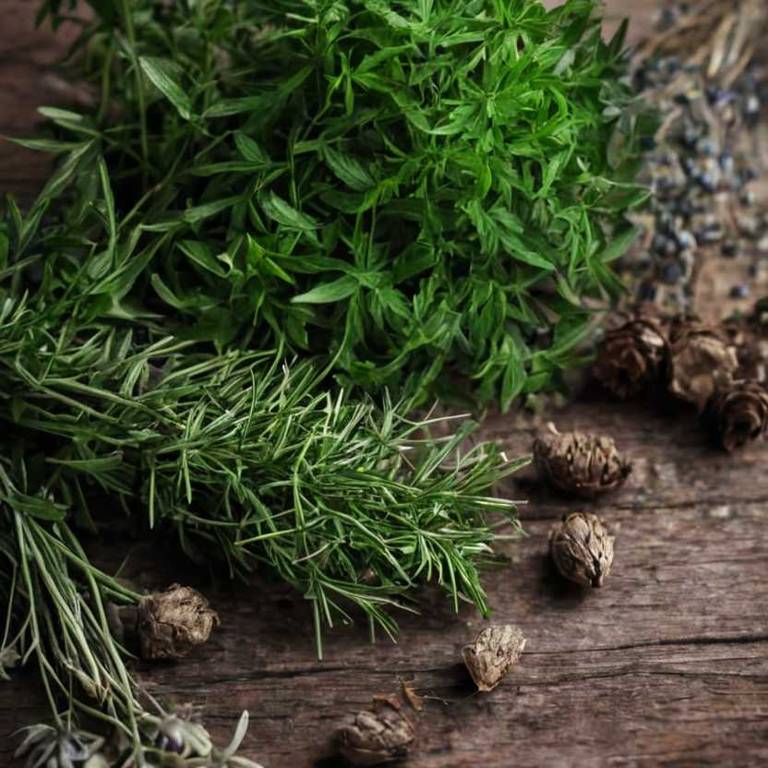10 Best Pinus Pinaster Preparations

The best medicinal preparations of Pinus pinaster are teas, decoctions, tinctures, essential oils, and mucillages, each offering unique therapeutic benefits.
Teas made from the needles or bark are commonly used to support respiratory health and reduce inflammation.
Decoctions, which involve boiling the bark, are valued for their ability to extract more robust compounds.
Tinctures provide a concentrated form of the herb’s active ingredients, often used for digestive and circulatory support.
Essential oils derived from the needles are prized for their antiseptic properties, while mucillages, the gel-like substance, are used to soothe irritated tissues.
Below there's a list of the 10 best herbal preparations of pinus pinaster for medicinal purposes.
1. Teas
Pinus pinaster teas is commonly used to support cardiovascular health, reduce inflammation, and promote digestive wellness.
This herbal preparation is often employed to treat ailments such as high cholesterol, hypertension, and digestive issues like indigestion and bloating. The bioactive constituents responsible for its medicinal properties include flavonoids, phenolic acids, and proanthocyanidins, which exhibit antioxidant, anti-inflammatory, and vasodilatory effects. These compounds help improve blood vessel function and reduce oxidative stress in the body.
Additionally, the tea may contribute to liver protection and immune system support.

2. Decoctions
Pinus pinaster decoctions is commonly used to support cardiovascular health, reduce cholesterol levels, and enhance cognitive function.
This herbal preparation is often employed to treat ailments such as hypertension, hyperlipidemia, and memory-related disorders. The bioactive constituents responsible for these effects include polyphenols, flavonoids, and procyanidins, which possess antioxidant, anti-inflammatory, and neuroprotective properties. These compounds help in reducing oxidative stress and improving blood flow.
Additionally, Pinus pinaster decoctions may aid in liver detoxification and have antimicrobial properties.

3. Tinctures
Pinus pinaster tinctures is commonly used to support cardiovascular health, reduce inflammation, and promote skin healing.
These preparations are often employed to treat ailments such as high blood pressure, arthritis, and minor skin irritations. The medicinal properties of Pinus pinaster tinctures are attributed to bioactive constituents like flavonoids, phenolic acids, and proanthocyanidins. These compounds exhibit antioxidant, anti-inflammatory, and antimicrobial activities.
Additionally, some studies suggest that these tinctures may aid in improving circulation and reducing oxidative stress in the body.

5. Mucillages
Pinus pinaster mucillages is commonly used to treat digestive disorders, inflammation, and respiratory conditions.
This herbal preparation is known for its soothing and protective effects on the gastrointestinal tract. It is often used to alleviate symptoms of gastritis, ulcers, and irritable bowel syndrome. The mucillages also exhibit anti-inflammatory and antioxidant properties, which contribute to its therapeutic effects.
The bioactive constituents include polysaccharides, flavonoids, and phenolic compounds, which provide the preparation with its medicinal benefits.

6. Capsules
Pinus pinaster capsules is commonly used to support cardiovascular health, reduce cholesterol levels, and improve overall circulation.
They are also used to alleviate symptoms of hypertension, atherosclerosis, and other circulatory disorders. The most common medicinal uses include treating high blood pressure, lowering LDL cholesterol, and supporting liver function. The bioactive constituents responsible for these effects include polyphenols, flavonoids, and sesquiterpene lactones, which have antioxidant, anti-inflammatory, and vasodilatory properties.
These compounds contribute to the herb’s ability to promote heart health and reduce oxidative stress in the body.

7. Oils
Pinus pinaster oils is commonly used to treat various ailments such as respiratory infections, skin conditions, and inflammatory disorders.
These oils are valued for their antimicrobial, anti-inflammatory, and antioxidant properties. They are often applied topically for conditions like eczema, psoriasis, and fungal infections, and may also be used internally to support immune function. The bioactive constituents responsible for these effects include terpenes, phenolic compounds, and flavonoids.
These compounds work synergistically to provide the oil's therapeutic benefits.

8. Creams
Pinus pinaster creams is commonly used to treat skin conditions and inflammatory disorders.
The most common medicinal uses of this herbal preparation include the treatment of eczema, psoriasis, and other dermatological issues, as well as reducing inflammation and pain associated with minor injuries or arthritis. The bioactive constituents of this preparation, such as flavonoids, phenolic acids, and terpenes, contribute to its anti-inflammatory, antioxidant, and antimicrobial properties. These compounds help in soothing irritated skin and promoting healing.
Overall, Pinus pinaster creams is valued for its natural therapeutic benefits in supporting skin health and reducing inflammation.

9. Syrups
Pinus pinaster syrups is commonly used to support respiratory and digestive health, as well as to alleviate symptoms of coughs, bronchitis, and gastrointestinal discomfort.
The most common medicinal uses of this herbal preparation include treating respiratory infections, reducing inflammation, and aiding in the relief of persistent coughs. It is also used to support liver function and as a mild expectorant. The bioactive constituents responsible for its medicinal properties include flavonoids, terpenoids, and phenolic compounds, which exhibit antioxidant, anti-inflammatory, and antimicrobial effects.
These compounds contribute to its ability to soothe irritation and enhance immune response.

10. Lozenges
Pinus pinaster lozenges is commonly used to relieve symptoms of respiratory tract infections, sore throat, and cough.
These lozenges are often employed to treat ailments such as colds, flu, and bronchitis due to their soothing and antimicrobial properties. The bioactive constituents responsible for these medicinal effects include flavonoids, phenolic acids, and terpenes, which exhibit antioxidant, anti-inflammatory, and antimicrobial activities. Additionally, these compounds may help reduce mucus production and enhance immune response.
Overall, Pinus pinaster lozenges are valued for their natural therapeutic benefits in supporting respiratory health.
